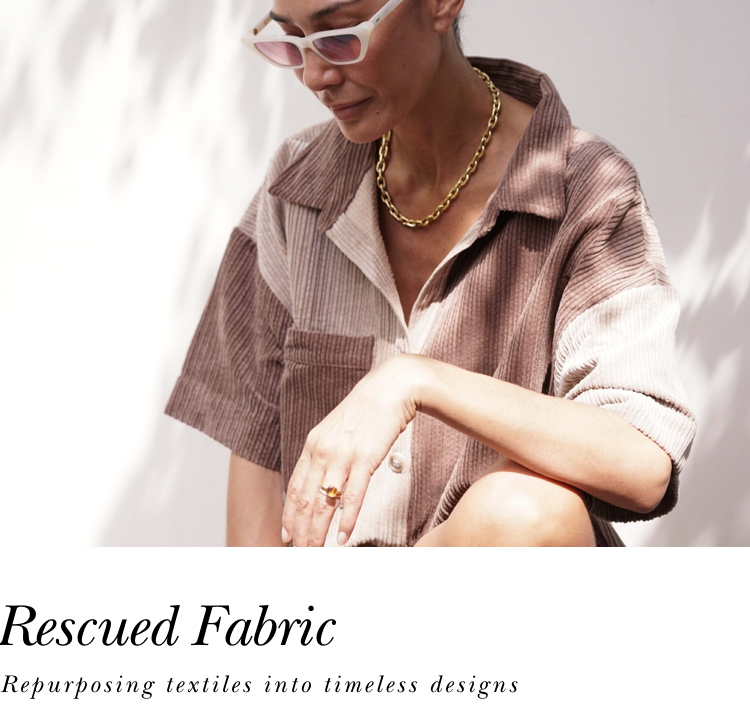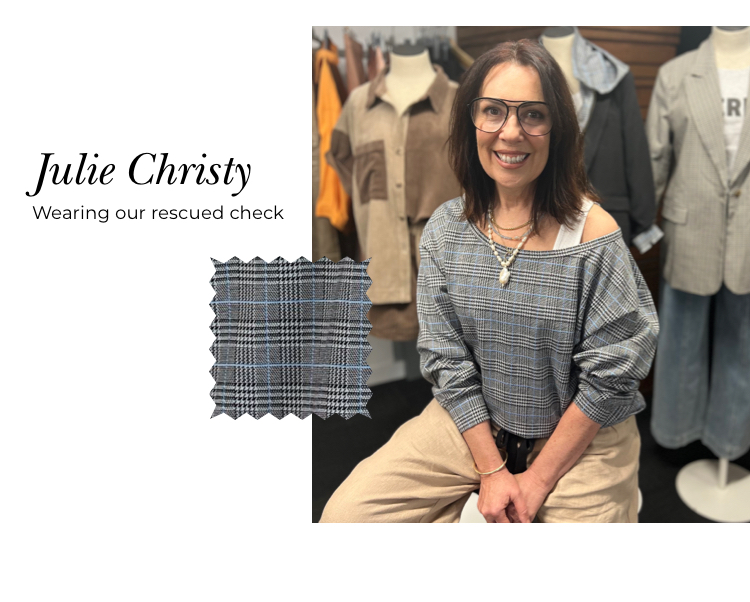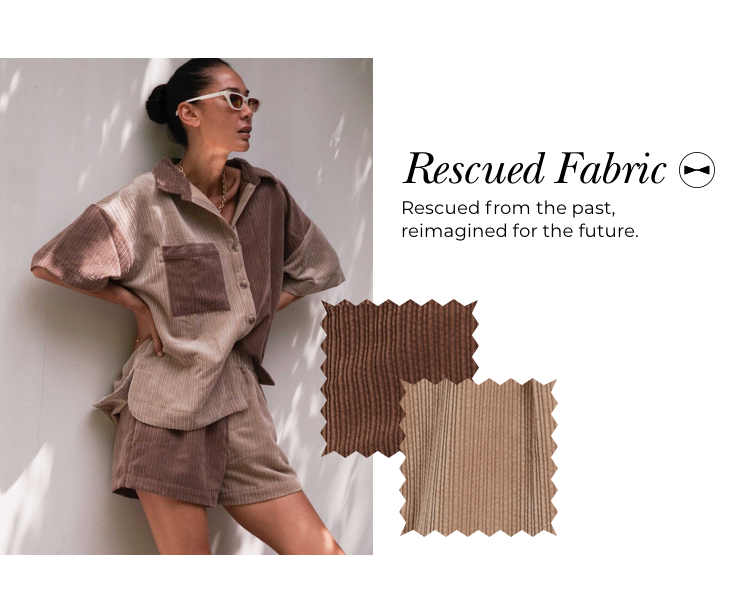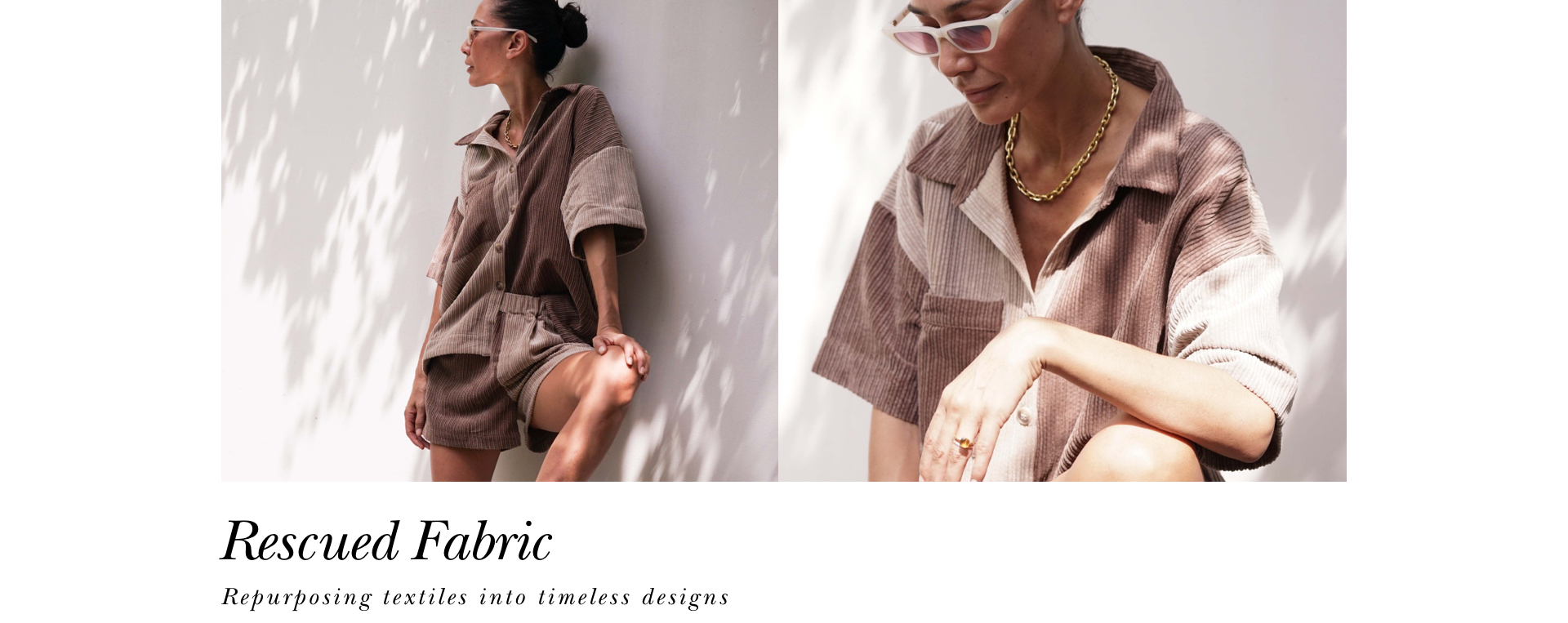
In fashion, we instinctively think about the future — asking ourselves what silhouettes, prints and colours we will crave next season and the season after.
At Ceres Life, we are also passionately committed to considering the future of the planet with every garment we design.
As designers, we believe that beautiful clothing shouldn't compromise the beauty of our planet. But we also think ethics and sustainability shouldn't limit great style.
That's where Julie Christy the creator of Ceres Life comes in. A trailblazer for our Responsible Fabric Toolbox, Julie initiated our commitment to using rescue fabric in our designs — repurposing textiles that would have otherwise been discarded and wasted.
In the past three years, we have diverted more than 18,000 metres of fabric away from landfill to create timeless designs that can be cherished season after season.
To learn more about the process, we sat down with Julie for a ‘behind-the-seams’ look at the new collection and sustainability highlights.
How does your role help Ceres customers access sustainable products more easily?
We believe there is a change in how our customer wants to purchase. Shopping sustainably is not just about what the garment is made from but also how it is designed and made.
When designing a garment, we have four filter questions: Is it easy to wear? Is it easy care? Is it flattering? Is it kind to the planet? We need our customer to know we only add garments to our range that have a yes to all four questions so she can be confident that when she buys from Ceres, she is buying into a community of like-minded women who want to look good while doing good.
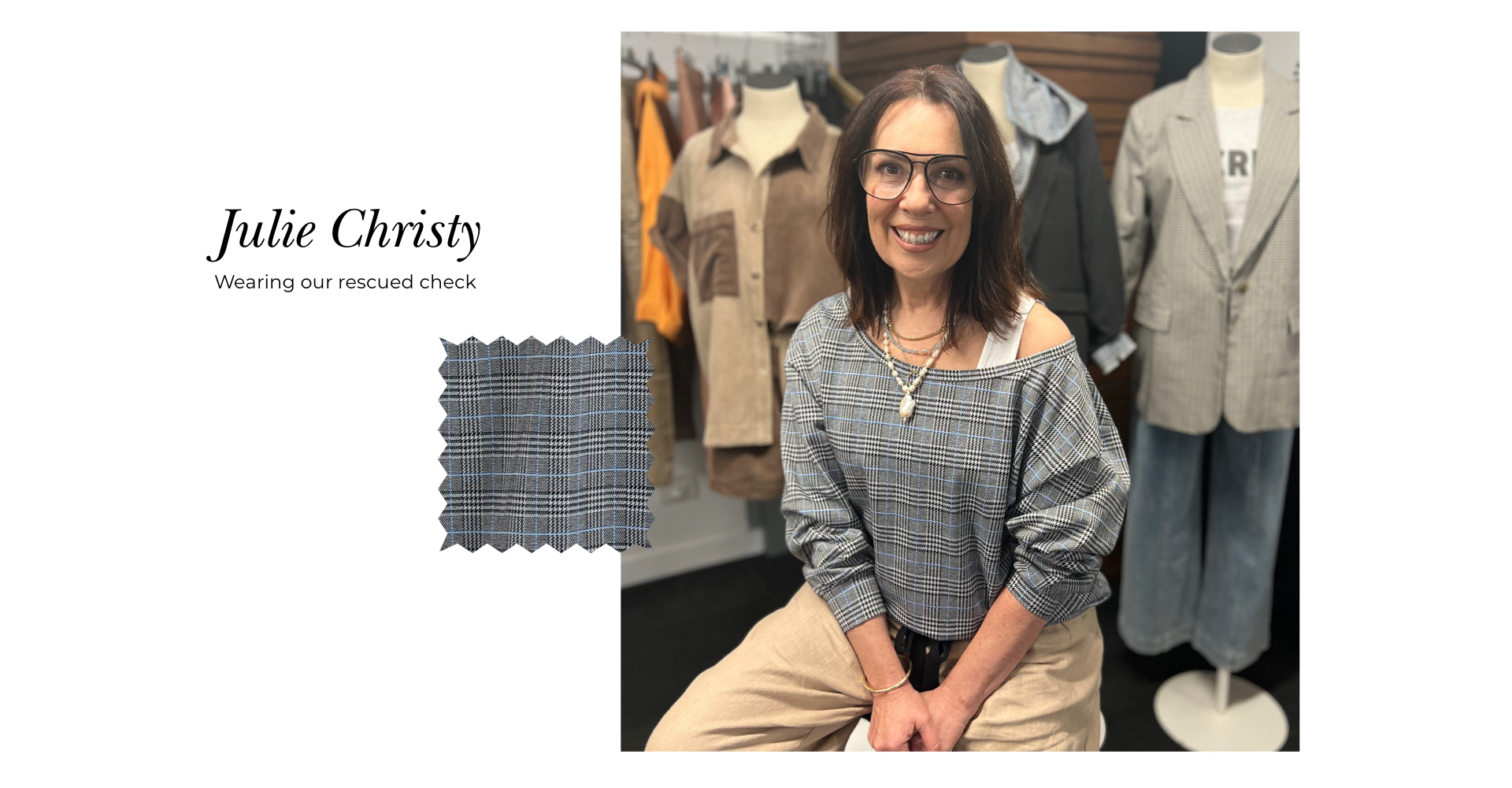
Ceres are on a passionate sustainability journey; what are some of the goals driving the integrity of the designs, ethically sourced and recycled fabrics, and communication with the consumer?
It is not so much that we are goal driven; we genuinely care and want to be part of the growing collective that rethinks how to use our resources to create a beautiful garment. We create a range that we hope will allow our customers to make choices with a new value: the value of environmental responsibility and the future of our earth.
Is your hope that each new collection is more socially responsible and sustainable than the previous one?
Absolutely! We learn more every day. It can become quite overwhelming as "the more you dig, the bigger the hole becomes", and there are so many fabric innovations on offer. We are lucky to have a support network to help us prioritise and select partners and fabrics with the most significant impact.
We have worked hard to create our Responsible Fabric Toolbox, and the commitment to only use fabrics from this Toolbox has enabled us to create a range where every style has a sustainable attribute — that is 100% of our range.
We are constantly sourcing new sustainable fabrics to add to this Toolbox, working on water-saving washing techniques and sustainably sourced buttons. However, it is not just the input of sustainable materials that contribute to our sustainable range; it is the design and quality of the garments. We create ranges with a classic foundation layered with a nod to trend; this allows our customer to build a capsule wardrobe with the confidence the garments will have a long lifecycle and for the quality to last a lifetime in her wardrobe.
What are some sustainable material highlights in the Responsible Fabric Toolbox this season?
Our amazing Contour Rib is flattering, functional and sustainable. Featuring 95% Organic Cotton with 5% elastane, this is a heavy-weight rib that creates a smooth silhouette and enhances your shape. Who would not want that?
Another highlight is our denim offer, with our core denim fabrication of 99% organic cotton and 1 % elastane. It means our jeans look like a cool rigid denim but have the comfort of stretch and keep their shape. Everyone needs to try a pair.
What is the difference between repurposed, rescued and recycled fabrics?
The definition of "recycled" is to convert waste into reusable material, either post-consumer (from the customer) or pre-consumer waste (offcuts from the factory floor).
"Repurposing" is to adapt an item or fabric to a different use, whereas "rescued" fabric is taking leftover material from the mills and creating garments from this fabric rather than making new fabric. Doing this takes a little more imagination and ranging skill; however, we believe we shouldn't create more fabric when the mills hold so much redundant fabric.
We are constantly rethinking how to use the resources we need to create a garment and how we can create this garment with low environmental impact.

What is the primary thing consumers should look for in a responsibly made garment?
I actually think there are three main considerations: What is it made from? How long will you love it? And how will it arrive?.
As consumers become increasingly aware of the future and fragility of the world around us, how important is it to engage them on Ceres' sustainable journey through education and transparent content?
The storytelling of our efforts will be one of the key factors to the success of our brand. Creating and using only fabrics from our Responsible Fabric Toolbox comes at a price as sustainable fabrics are more expensive, as does the certification to validate the integrity of these fabrics. We truly believe our customer sees value in our garments, garments made from sustainably sourced fabrics, designed to last, and freighted responsibly. We want to keep everyone informed and positively tell our story.
When it comes to sourcing materials for the Responsible Fabric Toolbox, what areas are you looking to expand on in the future, and how will you do this?
We plan to increase the percentage of organic cotton. Organically grown cotton is grown using techniques that have a lower impact on the environment, with the elimination of synthetic fertilisers, herbicides and pesticides and following farming practices to reduce water consumption, and energy conservation and protect soil health. Therefore, better for you, your skin, and our planet.
While continuing to develop our Responsible Fabric Toolbox, we also plan to set targets to reduce our carbon footprint. We are working with an Environmental Specialist to identify our current measures, identify the areas of behaviour that will have the greatest impact, and set our new targets. Watch this space…
In addition to being better for the environment, what are some of the other benefits of responsible fabrications?
We have five pillars of fabrication in our Responsible Fabric Toolbox: Recycled, Organic, Rescued, Natural and Certified.
Some of the benefits are self-explanatory, but the Certified Pillar is one to highlight. Using Certified Fabrics such as Lenzing Viscose allows us to partner and support industry experts who are constantly developing sustainable practices and fabrications. We believe in creating and being part of a collective of like-minded people and businesses. Together, we can make a stronger statement about what is needed to reverse the damage the fashion industry has done over the last 20 years.




